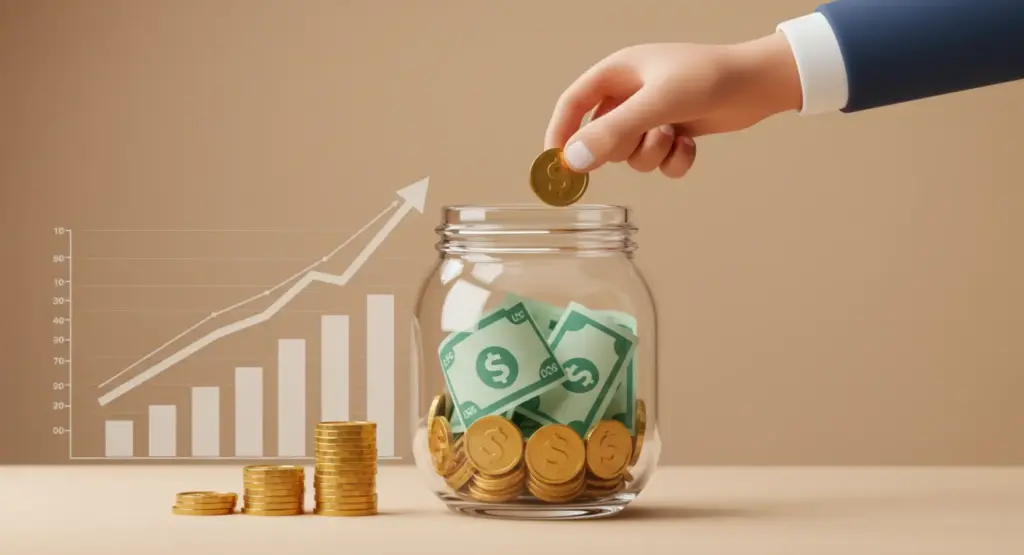The Solid Foundation: How to Build an Emergency Fund from Scratch

In an unpredictable world, a financial safety net is not a luxury—it’s a necessity. An emergency fund is a readily accessible pool of money dedicated solely to covering unforeseen financial crises, such as a sudden job loss, a major medical bill, or an urgent car or home repair. Without this cushion, a single unexpected event can derail your finances, leading to debt, stress, and long-term setbacks.
The good news is that building this crucial financial buffer, even if you’re starting from absolute zero, is an achievable goal. It requires a clear strategy, discipline, and consistent effort. This comprehensive guide will walk you through the essential steps to build a robust emergency fund from scratch, paving the way for lasting financial security and peace of mind.
Phase 1: Setting the Foundation and Defining the Goal
The journey begins with assessment and a concrete target. You can’t reach a destination without knowing where you’re going.
1. Assess Your Current Financial Reality
Before you can save, you need to know where you stand.
- Audit Your Income: Total your net (take-home) monthly income. If your income is variable (e.g., from freelance or gig work), use a conservative average from the last six to twelve months.
- Track Your Spending: Use budgeting software, a spreadsheet, or a simple notebook to meticulously track every dollar you spend for at least one month. This process will uncover where your money is actually going and identify potential areas for reduction.
2. Calculate Your Target Emergency Fund Size
The standard financial rule of thumb is to save three to six months' worth of essential living expenses. This is the key metric, not your total income.
- Essential Expenses Only: Go through your spending data and calculate the absolute minimum you need to survive comfortably. This includes:
- Rent/Mortgage
- Essential Utilities (Gas, Electric, Water)
- Groceries
- Minimum Debt Payments
- Basic Transportation Costs (Gas or Public Transit)
- Insurance Premiums
- Exclude discretionary costs like dining out, non-essential subscriptions, and entertainment.
- Determine Your Final Goal: Multiply your monthly essential expense total by 3, 4, 5, or 6.
- High Job Security/Dual-Income Households: Aim for 3 months.
- Average Stability/Single-Income: Aim for 3 to 6 months.
- Self-Employed/Volatile Industry/Many Dependents: Aim for 6 months or more.
Initial Milestone: If the full goal feels overwhelming, set a smaller, more immediate target first. Many experts recommend aiming for an initial cushion of $1,000 to $2,000 as a "mini-fund" to cover minor shocks like a car repair or insurance deductible.
3. Define What Qualifies as an Emergency
Discipline is critical. Your emergency fund is not for vacations, holiday gifts, or a new TV. Write down a clear list of what is and is not an emergency.
- Genuine Emergencies: Job loss, significant unexpected medical expenses, major home repair (burst pipe, furnace failure), or essential car repair.
- Not Emergencies: Vacation, concert tickets, sales shopping, non-essential vehicle upgrades, or a planned house renovation.
Phase 2: Implementation and Turbocharging Your Savings
Once you have your target, the focus shifts to creating a systematic and effective savings plan.
4. Establish a Dedicated, Accessible Account
Where you keep the money is nearly as important as the amount you save.
- Separate is Safe: Open a separate, dedicated savings account, ideally at a different bank or credit union than your primary checking account. This psychological barrier makes it harder to dip into the funds for non-emergencies.
- Liquidity and Safety: The funds must be easily accessible (liquid) and safe. The best location is typically a High-Yield Savings Account (HYSA). HYSAs are federally insured (up to legal limits) and pay a much higher interest rate than traditional savings accounts, allowing your money to grow modestly while remaining protected from market fluctuations.
- Avoid Investments: Do not put your emergency fund into the stock market or other volatile investments. The primary goal is stability and access, not maximum growth.
5. Automate Your Contributions
The single most effective strategy for building your fund is to eliminate human error.
- Pay Yourself First: Treat your emergency fund contribution like any non-negotiable monthly bill (e.g., rent or mortgage).
- Set Up Automatic Transfers: Schedule an automatic transfer from your checking account to your dedicated savings account to occur immediately after every payday. Even if it's a small amount—$25, $50, or $100—consistency is key. Automated savings removes the decision-making process, ensuring your fund grows without conscious effort.
6. Find Money to Save: Budgeting for Reduction
Review the spending analysis from Step 1 to carve out extra cash for your fund.
- The Big Cuts (Needs): Negotiate lower interest rates on debt, shop for lower auto/home insurance premiums, review and switch to more affordable mobile or internet plans, or look for opportunities to reduce utility usage.
- The Small Cuts (Wants):
- Cancel Subscriptions: Audit monthly recurring fees (streaming services, gym memberships) and cut those you rarely use.
- Reduce Dining Out: Commit to cooking at home more often. Even $10 less per day on lunch can be over $200 per month dedicated to your fund.
- Temporary Lifestyle Adjustments: While building the fund, commit to a temporary spending freeze on non-essential purchases like new clothes, expensive entertainment, or coffee shop visits.
7. Leverage Windfalls and Extra Income
Any unexpected or extra income should be immediately redirected to your emergency fund to accelerate your progress.
- Tax Refunds and Bonuses: Dedicate 100% of tax refunds, annual bonuses, or work commissions to your fund. Since you budgeted without this money, you won't miss it.
- Side Hustles and Selling Items: Take on a short-term side gig or sell unused items around your home (electronics, clothing, furniture). Funnel 100% of this money straight into your emergency savings.
Phase 3: Maintenance and Review
Reaching your goal is an achievement, but the work of a responsible fund manager is ongoing.
8. Replenish the Fund After Use
If a true emergency occurs and you have to tap into your savings, your first financial priority must be to replenish the fund. Return to Phase 2: treat the replenishment like a debt to be paid off, re-automating your savings until you are back at your target amount.
9. Review and Adjust Your Goal
Life circumstances change, and your fund size should adapt accordingly.
- Life Events: Did you get married, have a child, buy a home, or switch to a less stable career? Review your essential expenses and consider increasing your fund from three months' coverage to six or even nine months'.
- Inflation: Your monthly expenses will naturally increase over time due to inflation. Re-calculate your essential expenses annually to ensure your emergency fund maintains its purchasing power.
Building an emergency fund from scratch is a journey of small, consistent steps, not a single leap. By defining a clear goal, automating your savings, and maintaining unwavering discipline, you transform financial anxiety into durable security. This financial foundation will empower you to handle whatever surprises life throws your way, protecting your present and securing your future.

Related